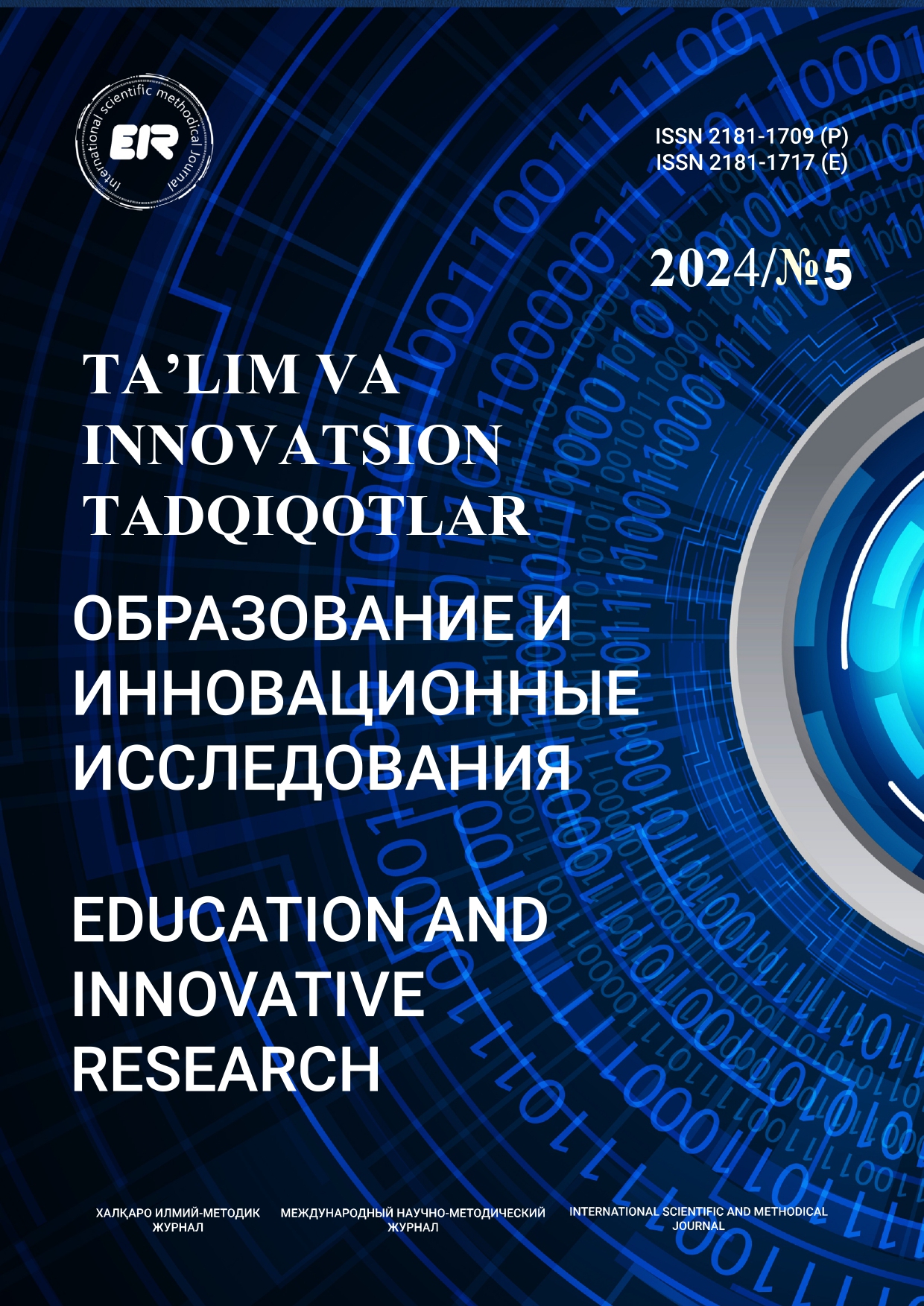INTERACTIVE METHODS IN TEACHING THE SUBJECT OF VECTORS
Rashidov Anvarjon Sharipovich Associate professor of Bukhara State Pedagogical Institute Salomova Zaynab Jamol kizi 3rd level student of Bukhara State Pedagogical Institute
Keywords:
geometry at school, vector arithmetic, program vectors, dimension in space, direction, straight line, vector module, parallel vectors, broken line, scalar multiplication.Abstract
Currently, there are many types of training using advanced pedagogical technologies (interactive methods), which are selected and prepared according to the characteristics of the subject of the lesson and the intended goals. This is very important when passing math lessons. In this case, specific requirements are placed on the students’ preparation. The main goal of pedagogical technologies in education is to bring the student to the center of the lesson process in the teaching system, to turn him away from automatic repetitions, to develop independent and creative activity, and to become an active participant of the lesson. Vectors are controversially given in a school geometry course. Our definitions and their existence do not ensure its usefulness - it is weakly related to the rest of the material, and it is mostly self-sufficient. The article shows that vectors can be a very meaningful and useful tool in geometry, and more precisely in planimetry, and this applies not only to what is learned in school. To do this, we suggest using a vector definition that better fits the essence of this concept, as well as a more complete vector arithmetic. The latter enables the representation of properties and relations which are so important, but wrongly neglected, in school geometry, and which make it possible to perform calculations otherwise unattainable. Thus, the school’s traditional classical approach to geometry is harmoniously complemented by analytical apparatus. The use of vectors in proving theorems and solving problems is shown in several examples.
References
Educating teachers of science, mathematics, and technology : new practices for the new millennium / Committee on Science and Mathematics. Copyright 2001 by the National Academy of Sciences. Constitution Avenue, N.W. Washington
Djurayev R.X va boshqalar. Pedagogik atamalar lug‘ati. –T.: “Fan nashriyoti”, 2008 yil. – 94-bet
A. Sh. Rashidov Matematika darslarida tа’limning shахsgа yo ‘nаltirilgаn tехnоlоgiyasi. Центр научных публикаций. 2021 yil. 3-son. 68-72 bet
A.Sh. Rashidov Ijtimoiy-gumanitar ta’lim yo‘nalishi talabalari uchun matematik fanlar bo‘yicha amaliy mashg‘ulotlarni o‘tkazish. Science and Education №9. C 283-291
О.O.Халлоқова. А.Рашидов Пороговое собственное значение модели Фридрихса. Молодой ученый, 2015 №15. C. 1-3
A. Sh. Rashidov Interaktivnyye metody pri izuchenii temy «Opredelennyy integrali yego prilozheniya».
Nauchnyye issledovaniya. № 34:3. C 21-24
A. Sh. Rashidov Yoshlar intellektual kamolotida ijodiy tafakkur va kreativlikning oʻrni. Pedagogik mahorat 2021 yil №7. 114-116 bet.
Joʻrayeva N. O., Boymurodova Sh. Sonli ketma-ketliklar mavzusini o’qitishning o’ziga xos xususiyatlari.
Образование и наука в XXI веке». Выпуск №26 (том 6) (май, 2022). -584-595 стр
Joʻrayeva N. O., Husenova M.B. Implikatsiya, konversiya, inversiya va kontrapozitsiya. Образование и наука в XXI веке». Выпуск №26 (том 6) (май, 2022). -760-770 стр
Joʻrayeva N. O., Qayumova Sh.R. Toʻldiruvchi burchakning trigonometrik funksiyalari uchun formula mavzusini oʻqitish boʻyicha mulohazalar. Образование и наука в XXI веке». Выпуск №26 (том 6) (май, 2022). -848-858 стр
A.Sh. Rashidov.Matematika fanlaridan talaba yoshlar ijodiy tafakkurini rivojlantirish. Fan va jamiyat №3. C 45-46
A.Sh. Rashidov замонавий таълим ва инновацион технологиялар соҳасидаги илғор тажрибалар.
Центр научных публикаций. 2021 yil. 3-son. 68-72 bet 8-14
A.Sh.Rashidov. M.F.Faxridinova. O‘quvchilarning bilimini baholashda xalqaro baholash dasturlari. “Fizika, matematika va informatsion texnologiyalarning innovatsion rivojlanishdagi o‘rni” mavzusidagi Respublika ilmiy-nazariy anjuman. Buxoro. 222-227 bet.
A.Sh.Rashidov. S.A.Mehmonova. Matematik analiz fanini o`qitishda interfaol metodlar: “KEYS-STADI” metodi “Fizika, matematika va informatsion texnologiyalarning innovatsion rivojlanishdagi o‘rni” mavzusidagi Respublika ilmiy-nazariy anjuman. Buxoro. 165-169 bet.





